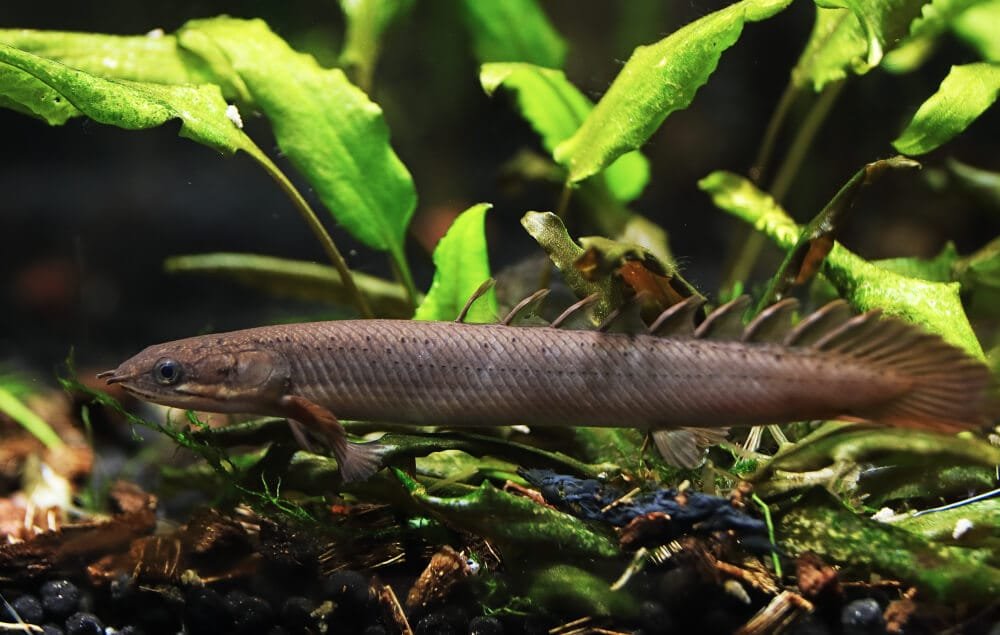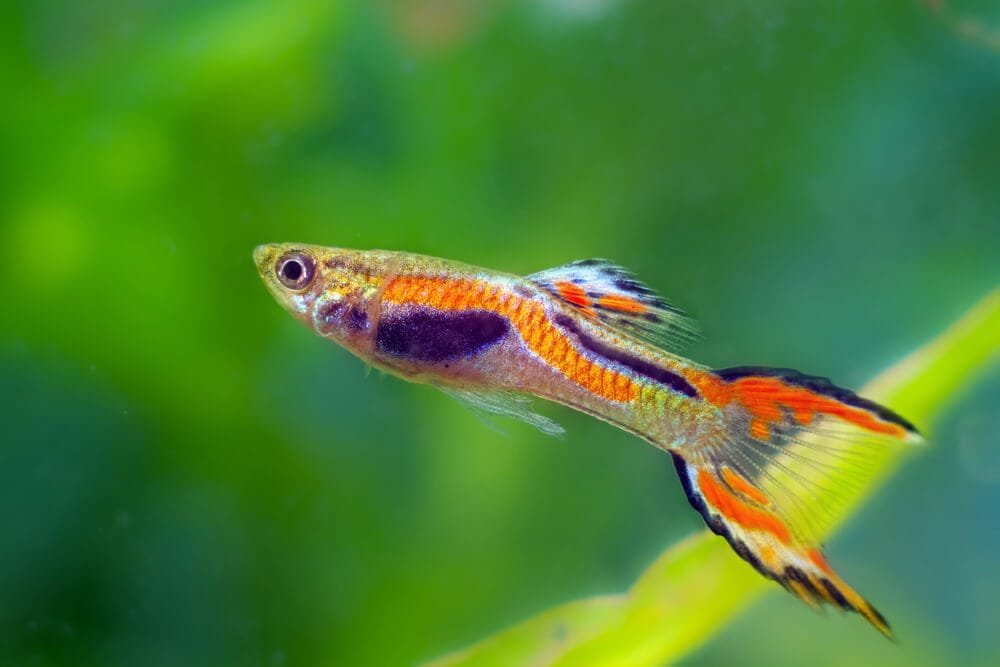Have you ever wondered how to distinguish between male and female Molly fish? Well, look no further! In this article, we will explore the key differences between these two genders. Understanding these distinctions can not only help you identify the sex of your Molly fish but also provide valuable insights into their behavior and care. Whether you’re a seasoned fish enthusiast or just starting your aquatic journey, this article is a must-read for anyone interested in the fascinating world of Molly fish. So, let’s dive in and uncover the secrets of telling male and female Molly fish apart!
Body Shape
Male Body Shape
Male Molly fish typically have a slender and elongated body shape. They are more streamlined and have a more streamlined and streamlined appearance compared to their female counterparts. This body shape allows them to swim faster and more efficiently, making them more agile in the water. Their bodies are also generally smaller in size compared to female Molly fish.
Female Body Shape
Female Molly fish, on the other hand, have a rounder and fuller body shape. They tend to have a more pronounced abdomen, especially when they are pregnant or carrying eggs. This body shape is well-suited for carrying and protecting their developing offspring. The female’s body is generally larger in size compared to the male Molly fish.
Size
Male Size
Male Molly fish are typically smaller in size compared to females. On average, they reach a length of about 2 to 3 inches when fully grown. However, there can be variation in size depending on the specific Molly fish species. Despite being smaller, male Molly fish can still exhibit vibrant and attractive colors.
Female Size
Female Molly fish are generally larger in size compared to their male counterparts. They can reach a length of about 4 to 5 inches when fully grown, which is significantly larger than the average size of male Molly fish. This size difference is particularly noticeable during their reproductive period when the female’s abdomen expands as they carry eggs or pregnant.
Coloration
Male Coloration
Male Molly fish often boast vibrant and striking coloration. They exhibit a wide range of colors, including shades of black, yellow, orange, red, and even metallic hues. Their fins and body may also feature intricate patterns and designs, which can vary depending on the specific Molly fish species. These vibrant colors and patterns play a crucial role in attracting female Molly fish during the mating season.
Female Coloration
While female Molly fish may not have as vibrant coloration as the males, they still exhibit their beauty in different ways. Female Molly fish often display a more subdued color palette, consisting of shades of silver, gray, or pale yellow. However, their fins may still have some hints of color, albeit not as intense or striking as the male’s. The female’s coloration serves as a form of camouflage, allowing them to better protect themselves and their offspring from predators.
Fins
Male Fins
Male Molly fish typically have more elaborate and elongated fins compared to females. Their dorsal fin, located on the back, may be larger and more prominent, giving them a distinguished appearance. Their anal fin, located on the lower part of the body, may also be more pronounced. Additionally, male Molly fish can exhibit more elaborate fin patterns, with extensions or filament-like projections.
Female Fins
Female Molly fish have fins that are generally smaller and less elaborate compared to males. Their dorsal fin is usually shorter and less pronounced compared to their male counterparts. The anal fin in females may also be smaller and less elongated. These differences in fin size and shape contribute to the overall distinction between male and female Molly fish.
Anal Fin
Male Anal Fin
Male Molly fish have a modified anal fin called a gonopodium. This fin is elongated and pointed, enabling them to transfer sperm to the female during reproduction. The gonopodium can be moved and positioned for efficient mating. The presence of the gonopodium is a definitive characteristic of male Molly fish and is absent in females.
Female Genital Papilla
Female Molly fish have a small and inconspicuous genital papilla located behind the anal fin. This papilla is not as pronounced or elongated as the male’s gonopodium. The purpose of the genital papilla is to receive and store the sperm deposited by the male during mating. It is an essential reproductive feature unique to female Molly fish.
Swimming Behavior
Male Swimming Behavior
Male Molly fish are known for their energetic and vibrant swimming behavior. They often display agility and speed, darting around the aquarium in an effort to attract the attention of female Molly fish. Males may also engage in playful chasing and courtship behaviors, showcasing their vitality and dominance within the tank.
Female Swimming Behavior
Female Molly fish exhibit a more serene and relaxed swimming behavior in comparison to males. They tend to swim steadily and gracefully, conserving their energy for reproductive and nurturing tasks. Female Molly fish may occasionally engage in brief bursts of activity, particularly during courtship or when defending their territory from potential threats.
Reproduction
Male Reproduction
Male Molly fish play a crucial role in the reproductive process. They use their elongated gonopodium to transfer sperm during mating. The male aims to fertilize the eggs produced by the female, ensuring successful reproduction. Males may actively pursue and court female Molly fish by displaying vibrant colors and engaging in intricate swimming displays.
Female Reproduction
Female Molly fish are responsible for carrying and protecting the developing eggs. They produce a batch of eggs, which are fertilized by the male’s sperm. The female gathers the fertilized eggs into her abdomen, where they develop and grow. Depending on the Molly fish species and environmental conditions, the gestation period can last anywhere from four to six weeks, after which the female gives birth to live young.
Aggression
Male Aggression
Male Molly fish can exhibit territorial and aggressive behavior, particularly during the breeding season. They may become more assertive and competitive to secure the attention of female Molly fish and establish their dominance within the aquarium. Males may engage in chasing and fin nipping if they perceive other males as rivals.
Female Aggression
Female Molly fish, in general, are less aggressive compared to males. However, during the reproductive period, females may become more protective of their territory and offspring. They may display territorial aggression towards other fish species or even towards male Molly fish, especially if they sense a threat to their nest or babies.
Compatibility
Male Compatibility
Male Molly fish can coexist peacefully with other fish species, as long as there is sufficient space and hiding spots in the tank. When kept in a community aquarium, it is recommended to have a higher ratio of females to males to distribute their attention and reduce aggression between males. Male Molly fish may occasionally display dominance behavior, but this can typically be managed through proper tank setup and providing adequate hiding spaces.
Female Compatibility
Female Molly fish are generally compatible with a wide variety of other fish species. They are known for their peaceful nature and can coexist harmoniously within a community aquarium. However, it is important to monitor the tank population and ensure there are no overcrowding issues, as this can lead to stress or aggression among the fish. Providing sufficient hiding places and maintaining a balanced ecosystem will contribute to a harmonious environment for female Molly fish.




